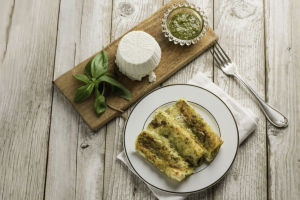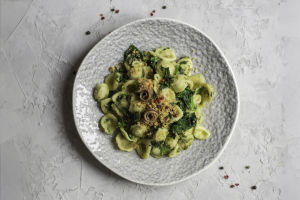When it comes to enjoying a great espresso, most people focus on the quality of the coffee beans, the grind size, or the brewing technique. However, one often overlooked yet essential factor is the cup itself.
The right espresso cup doesn’t just hold your coffee—it enhances its aroma, preserves its temperature, and even influences the way you perceive its flavors. From the choice of material to the shape and thickness, every detail plays a role in delivering the perfect sip.
The Importance of Espresso Cups
Why Espresso Cups Matter
The choice of the right espresso cups may seem like a minor detail, but it truly makes a difference! The ideal cup maintains the coffee at the right temperature, enhances its aroma, and offers a unique sensory experience.
Additionally, the cup's design can influence the presentation, turning a simple coffee into a small masterpiece.
What to Look for in Coffee Cups
Coffee in Glass or Ceramic: What's the Difference
When it comes to quality, ceramic espresso cups are the best option. Especially when talking about porcelain - a particular quality of ceramic, synonymous with elegance and style. It can keep the coffee warm for a long time and preserve its flavors.
Ceramic cups, in general, also stand out for their greater resistance to shocks and their often more rustic or artistic finishes. This solution is perfect for those looking for a combination of style and performance.
Material is indeed one of the most important factors in choosing espresso cups. Let's recap the differences:
- Ceramic: Offers excellent thermal insulation and a smooth surface that does not alter the coffee's taste.
- Porcelain: Elegant and resistant, it keeps the coffee warm for longer. It is often the preferred choice for connoisseurs.
- Glass: Provides excellent presentation and is perfect for observing the crema layer, but it dissipates heat more rapidly and there is a risk of burns. Furthermore, it is much more fragile than ceramic and often becomes opaque or stained over time.
How Big Should a Coffee Cup Be
The shape and size of the cup directly affect the tasting experience. For espresso, the cup should have a total capacity of about 40 ml, containing 25-30 ml of espresso. This size is optimal for enhancing the crema and concentrating the aromas.
Why Coffee Cups Should be Thick
Why Espresso Cups are Thick
- Cups should not only be beautiful but also functional and durable. Therefore, it is important to choose cups resistant to shocks and, if desired, also dishwasher-safe for easy and quick maintenance.
- The thickness of the cups is important not only for resistance but also for their ability to retain heat and maintain the right temperature of the drink. It is generally recommended to choose cups with a rim thickness of at least 5 mm.
- Pay attention to the handle too! It should also be thick and comfortable, allowing you to lift the cup with two fingers without it slipping and without burning yourself.
The Shape of an Espresso Cup
The external appearance of a cup can vary, but it is fundamental that the interior is rounded! This feature favors the formation of crema and ensures optimal consistency. A cup with a conical or rounded internal shape allows the coffee to collect at the bottom, maintaining its heat and intensifying its aroma.
The Color of an Espresso Cup
While the external appearance can be more varied, the interior of an espresso cup must strictly be a light color, such as white. Not only do light colors help maintain the temperature of the drink by reflecting heat, but the light color of the bottom enhances the appearance of the coffee crema, allowing you to evaluate and appreciate its quality.
Conclusion
Choosing the perfect espresso cups is a matter of taste, style, and functionality. Whether you are a ceramics lover or a fan of transparent glass, remember to pay attention to the material, design, and practicality. A good cup is not just an accessory but an essential element for an unforgettable experience.


